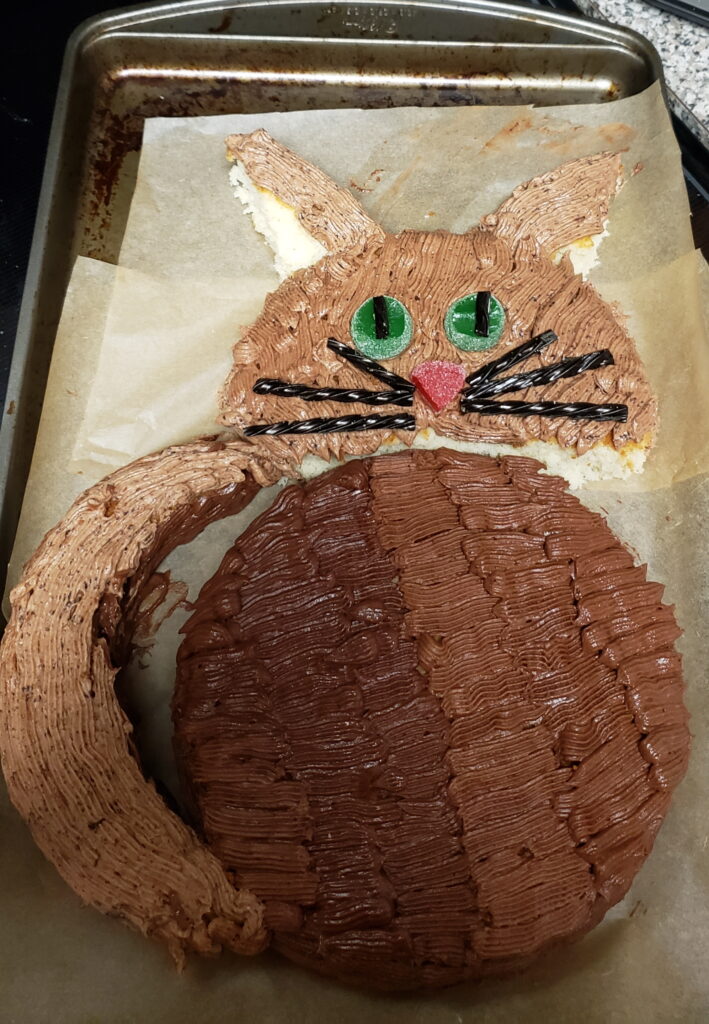Every household has some items in it that are toxic to your pets. This is normal! Some are scarier than others, however. We will cover some of the most common toxins (and some things we think are toxic but are not), how the toxins affect your pet, and the most common treatments for these toxins. If you are concerned about your pet, please call your veterinarian and poison control right away. Many of these are treatable if your pet is seen right away.
ASPCA Poison Control Website:https://www.aspca.org/pet-care/animal-poison-control
ASPCA Poison Control Phone Number: (888) 426-4435
Marijuana and Antifreeze
These two are going to be grouped together because they have very similar symptoms at first. Unfortunately, one is much more deadly than the other. Both THC and antifreeze can cause your dog (it is usually dogs who eat these) to act twitchy or fearful. The toxins also cause a hypermetric gait, meaning they pick their feet up higher than normal. Your pup may also appear sleepy and then jerk themselves awake. They are incredibly sensitive to sound. Most of these animals also will dribble urine without seeming to notice. If you notice any of these signs in your pet, please call a veterinarian right away! They definitely need treatment!
Treatment
The biggest difference in antifreeze and THC is the outcome. Antifreeze will eventually start to cause damage to the kidneys, which cannot be reversed. After this acute period, your pup will start to feel better, but the kidney failure that follows (5-7 days) is fatal. The only thing that a vet can do once you see signs is flush out those kidneys as much as possible using IV fluids. If you catch your pup actually drinking the antifreeze, your vet can cause vomiting, administer medication, and give charcoal to help bind up what the vomiting could not remove. It only takes about five tablespoons of antifreeze to kill a medium sized dog, so this is one toxin that you should be very careful with.
Marijuana, on the other hand, is a toxin that is rarely fatal with treatment. If just marijuana/TCH was ingested, some fluids, anti-nausea medication, and supportive care at a vet hospital is all they usually need. Very high doses can still be fatal, but again, this is rare. Dogs are much more sensitive to THC, so even a tiny amount can cause signs! The bigger concern with marijuana ingestion is actually edibles, since they often have chocolate or xylitol in them as well (more on these later).
If you know your dog has possibly ingested marijuana, please be honest with your vet. Veterinarians do not care about what you do in your free time, we only care about your pet’s health. You will save a lot of money on testing and intensive care if you are honest and let us know! This is the easiest way for us to be able to tell the difference between antifreeze and marijuana ingestion.
Cream of Tartar and Grapes- A new toxin discovery!
New research came out this year to tell us that the toxic compound in grapes is actually cream of tartar. Cream of tartar is an agent used in baking to make baked goods fluffier, sort of like baking soda, but without the bubbliness. It is the secret ingredient in my buttermilk pancakes, so it could be in anything.
Grapes and cream of tartar are toxic to some dogs, but not all. Some dogs will metabolize it into a compound that damages the kidneys and some don’t depending on how their liver processes it. Obviously the bigger the dog, the bigger a dose is required to be toxic. Because we do not know which dogs are predisposed to having kidney issues, we do recommend seeing a veterinarian if your pet has ingested grapes, raisins, or cream of tartar.
Treatment
If your pet has ingested the grapes, raisins, or baked good recently, your veterinarian will likely induce vomiting. If a lot of grapes were ingested, you may need to leave your pet in the hospital for the day to get IV fluids. Your vet will also likely want to do blood work when you arrive with your pet, and then repeat it a few hours to days later, to ensure no harm was done. Again, some dogs can eat grapes no problem! But for others, it is fatal.
Chocolate
Chocolate is toxic to dogs and cats, but not rabbits! The toxins in chocolate are theobromine and caffiene. White chocolate has the least amount of theobromine, while dark chocolate, cocoa powder, and coacoa have the most. Caffeine plays less of a roll. The bigger the pet, the more he can eat without having issues.
Signs of mild chocolate toxicity include mostly vomiting and diarrhea. With a higher dose, you will see seizures, elevated temperature heart attacks, and death. If your pet has consumed any amount of chocolate, please contact a veterinarian or the poison control hotline, and we can figure out together if this is a toxic dose.
Treatment
Treatment for chocolate toxicity is supportive. First, your vet will probably make your pet vomit, to get up any chocolate still left in the stomach. Then, your vet will force your pet to eat activated charcoal, to absorb some of the theobromine. IV fluids will help your pet process the theobromine faster, but she may need more help. She might need anti-seizure medications, cooling blankets, heart medications, and more!

Lilies
Lilies are a very common addition to your household– they are bright, colorful, beautiful, and remind us of the spring to come. Unfortunately, lilies are extremely toxic to cats, but not to dogs (except lily of the valley and gloriosa lily). Even pollen on the fur can kill your cat in a matter of days. Lilies are probably the least known of the toxins, and possibly the most deadly.
We do not recommend bringing lilies into a house with cats unless you can be sure that your cat has absolutely no access to them, the pollen, the leaves, any part of the plant! Not even the water it was sitting in. Only true members of the lily family have the toxins, so you may be able to get away with lily lookalikes, but please be cautious. Outdoor cats may ingest lily in a neighbor’s yard, or hide in a lily bush and then cleaning herself of the pollen later.
Treatment
Lilies in cats cause acute, severe kidney failure. Once ingested, your best hope is to have your cat hospitalized. if ingestion was recent, your vet may recommend inducing vomiting, and will very likely want to keep your pet on IV fluids for at least 24 hours (likely three or more days). While IV fluids will not save the kidneys, they may help your cat survive long enough to stabilize her kidneys. At that point, she will never regain full kidney function, but she may be able to live with her kidney disease for a while. This means regular fluids under the skin, a special diet, possibly anti-nausea medications, etc. for the rest of her life. Despite all the best treatments, many cats die from lily ingestion every Easter time. Please tell everyone you know about this, as many owners are completely unaware.

Poinsettias- Not quite a Toxin
The opposite of lilies, poinsettias are not particularly toxic to pets, but many people believe that they are. A cat has to eat an entire plant before experiencing severe problems, so chewing on a few leaves is ok. Sometimes, the toxins in poinsettas cause irritation to the mouth and esophagus, so if you see a lot of drooling after chewing on a poinsettia, please contact your vet to help get your pet more comfortable. These signs often resolve in 48 hours.
Chewing Gum and Peanut Butter
Chewing gum and peanut butter both have the same toxin, xylitol. Xylitol is a naturally occurring alcohol that you can find in many plants, even fruits and vegetables! It is used in gum, toothpastes, and sugar free peanut butters since it is very sweet. Xylitol confuses dogs’ livers. Their body registers it as a sugar and causes an insulin spike (the hormone that occurs naturally after you eat any meal) but their body cannot use it as a sugar, so their real blood sugar drops drastically and severely. This causes cells throughout the body to die, leading to weakness and seizures, as the brain stops being able to function. We don’t know why, but xylitol in dogs can also cause liver failure.
Xylitol is also known as birch sugar, so be wary. More and more products are staring to use xylitol as a sugar, as Americans seek out lower calorie and sugar free options. This is a safe food in humans– we don’t metabolize it the same way, and it is a good option for those of us more sensitive to sugars. The best way to assess if your dog has ingested a toxic dose of xylitol is to call the Pet Poison Control Hotline. They have the ability to assess based on your dog’s weight if a toxic dose was ingested.
Treatment
There is not a good treatment for xylitol toxicity. If the ingestion was within 30 minutes, your veterinarian will most likely have the dog vomit, and then monitor very closely for blood sugar issues. IV fluids can help to support the liver, and IV dextrose (sugar) can help during a hypoglycemic (low blood sugar) crisis.
Nicotine
Nicotine is also found in gum, and often dogs are exposed to both nicotine and xylitol at the same time. Pets are also exposed through E-cigarettes and tobacco, but they are less likely to eat these. Signs of nicotine toxicity include vomiting, lethargy, trembling, weakness, high or low heart rate, heart irregularities, and death. This is because nicotine acts like a normal chemical in our body that stimulates nerves to act.
Treatment
Like many of the above toxins, there is no good cure for nicotine toxicity. If your pet survives the first 4 hours, his prognosis improves. Your vet will likely treat with IV fluids, oxygen to support the heart, anti-seizure meds to control tremors, and various heart medications to keep it beating normally. If your pet is going to recover, he will recover in 48 hours, most likely.
Acetaminophen/Tylenol
Tylenol, or acetaminophen, is found in most homes. It is a great way for people to treat minor aches and pains. Like many human medications, it is not safe for our pets. Both dogs and cats are affected in similar ways, but cats are particularly sensitive. It can cause liver failure or methoglobinemia, meaning the red blood cells can’t carry oxygen any more. The signs of methoglobinemia include panting, lethargy, high heart rate, and brown colored gums. Without emergency treatment, your pet will die if this occurs. If they survive this stage, they may start to show signs of liver failure a few days later, including decreased appetite, yellow eyes and ears, pot belly, and strange colored urine and feces.
Treatment
The best treatment is to get your pet to vomit what they ate. After your vet induces vomiting, she will give your pet activated charcoal to help reduce absorption. Once your pet is showing signs, this is unlikely to help. Your pet will likely receive oxygen therapy, IV fluids, and N-acetylcysteine, the antidote. Generally, only specialty emergency veterinary hospitals carry this medication, however. In cats especially, they can have issues with blood clotting, and may need blood transfusions.
Pennies
Pennies are a less common cause of toxicity, but young animals will eat anything! Any penny made after 1982 are mostly zinc. The penny does not digest right away, but slowly dissolves in the stomach acid leading to chronic zinc exposure. Zinc causes red blood cells to weaken, leading to a low red blood cell count. It also leads to kidney damage, liver damage, and can damage the GI tract.
The signs of zinc toxicity in dogs, cats and ferrets include vomiting, diarrhea, weakness, and lethargy in the first few hours to days. After that, you can see bruising, heavy breathing, high heart rate, and death. The signs in birds are very similar, most presenting with puffed up feathers, not eating, and sudden death.
Treatment
Treatment is generally supportive; including fluid therapy, liver protectants, and antacids (to slow digestion of the zinc). Once your pet is stable, surgery is required to remove the penny (or other zinc object) from the stomach. If zinc blood levels are still high, your vet may consider chelation (treatment with almost an anti-toxin) but chelation will increase stomach absorption.
Creepy Crawlies!
We all know that some spiders can be venomous to animals, but we are talking about poisons and toxins here!
Fireflies
Did you know that fireflies are poisonous? If your cat hunts a few, you don’t need to worry, but if you catch wild insects for your bearded dragon, stay away from fire flies! Even the toxins in one firefly is enough to kill a bearded dragon. If your bearded dragon has eaten a firefly, you may notice shaking, open mouth breathing, coughing, and sudden death. This usually occurs in 1-2 hours after ingestion. There are no reported cases of a bearded dragon surviving, but he could theoretically be treated with oxygen, activated charcoal, treatment, and fluids.
Toads
Most toads here on the North Shore are not deadly, but a few invasive species are. Most toads encounters cause vomiting, drooling, and oral irritation. If your pet does lick a Colorado River Toad or a Cane Toad (the ones with the bad toxins), you need to be worried. These toads (and their tadpoles and eggs) will cause your dog to have drooling, oral pain (pawing at the mouth, wining), vomiting, diarrhea, weakness, shaking, difficulty breathing, seizures and then death. The most important thing you can do is rinse your dog’s mouth out with water immediately after he licks or bites a toad.
Treatment includes rinsing the mouth out with clean water, IV fluids, heart medications, anti-seizure medications, and oxygen. Sometimes, your vet will recommend a fat emulsion, meaning a high fat substance is injected into your dog’s veins to help absorb the toxin. Unfortunately, this has side effects of its own.
Stinkbugs
Thankfully stinkbugs are not actually really dangerous, since cats eat them all the time! When attacked, stinkbugs release a very smelly substance full of toxins, which can be irritating to the mouth. These can cause ulcers on the tongue and throat, which is uncomfortable. Your vet will likely want to treat this with pain medication and carafate, something to protect the oral cavity. The taste is also bad enough to make your pet vomit, but you don’t have to worry too much about your pet’s prognosis.
The world is a scary place!
Keeping our pets safe is a full time job! Now that you know about these toxins, you can help protect your pet as best you can. Making sure your pet has a safe space to play, many toys to destroy, and some cuddles can go a long way in keeping him or her safe. If you ever think your pet has ingested something toxic, call your veterinarian right away! The sooner you call, the better your pet’s chances of a full recovery.
Find out more about how to contact us at Welcome to All Creatures Veterinary Hospital!








